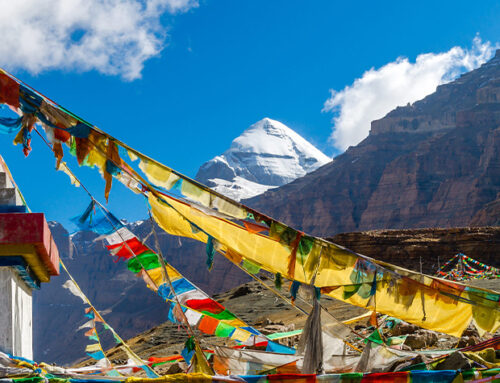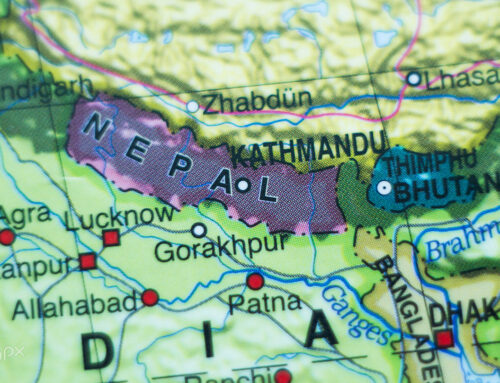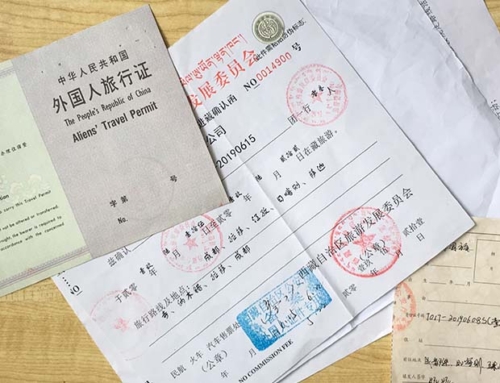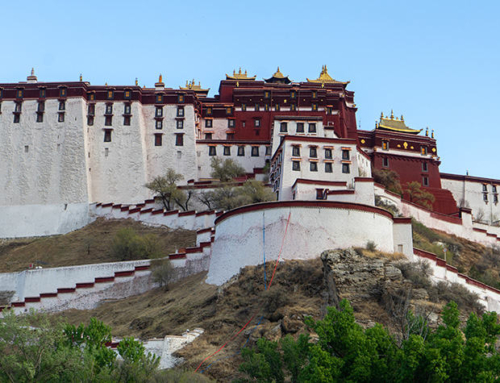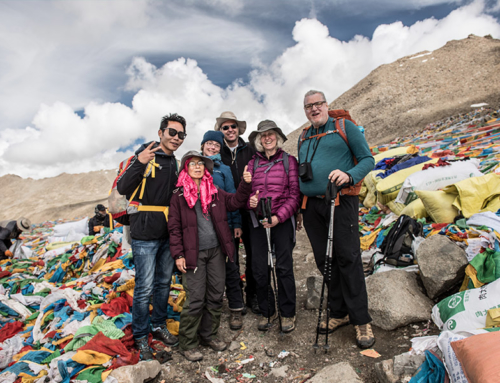Planning a trip to Tibet promises a journey into a breathtaking landscape, rich with cultural heritage and spiritual wonders. However, navigating the financial landscape in this unique region demands a bit of insight. As you embark on this enchanting adventure, understanding the intricacies of currency and selecting the right payment methods becomes paramount. The mystical land of Tibet, an autonomous region of China, utilizes the Chinese Yuan (CNY/RMB) as its official currency. While the region’s charm extends far beyond monetary concerns, having a comprehensive guide on handling money ensures a seamless and enriching travel experience. Whether you’re marveling at the grandeur of Lhasa or exploring the remote corners of Shannan, being well-versed in currency nuances, exchanging money strategically, and choosing the most practical payment methods will undoubtedly enhance your journey. So, let’s delve into the intricacies of managing finances in Tibet, ensuring you can focus on the cultural richness and spiritual serenity that this mesmerizing destination offers.
Understanding the Currency in Tibet
Chinese Yuan (CNY/RMB) is the currency used in Tibet as it is in entire country. For travelers, this means that all transactions, whether for accommodation, meals, or souvenirs, must be conducted in Chinese Yuan. The simplicity of a single currency streamlines financial interactions for both locals and visitors.
Foreign currencies, which international tourists may carry, cannot be used directly. Instead, they must be exchanged for Chinese Yuan, commonly referred to as Renminbi (RMB), at the designated points, primarily facilitated by the Bank of China. Your travel agency in tibet can also assist you with exchanging the your foreign currencies.
In the remote and rural landscapes of Tibet, where the pace of life is markedly different from urban centers, the importance of small denominations cannot be overstated. Larger bills, such as 100 or 50 Yuan notes, may pose challenges in transactions within these areas. Local vendors, small shops, or even nomadic communities may face difficulties providing change for higher denominations.
Therefore, it’s not merely a matter of currency but a nuanced understanding of the local economy, where the practicality of using smaller bills becomes evident. Travelers are advised to carry a mix of small denominations to ensure smooth transactions and contribute to the local economy effectively.
The most preffered way to pay in Tibet is via wechat payment but since most international travellers will not accessing this option, you can ask your tour guide to pay in advance.
Understanding the Currency in Tibet
Chinese Yuan (CNY/RMB) is the currency used in Tibet as it is in entire country. For travelers, this means that all transactions, whether for accommodation, meals, or souvenirs, must be conducted in Chinese Yuan. The simplicity of a single currency streamlines financial interactions for both locals and visitors.
Foreign currencies, which international tourists may carry, cannot be used directly. Instead, they must be exchanged for Chinese Yuan, commonly referred to as Renminbi (RMB), at the designated points, primarily facilitated by the Bank of China. Your travel agency in tibet can also assist you with exchanging the your foreign currencies.
In the remote and rural landscapes of Tibet, where the pace of life is markedly different from urban centers, the importance of small denominations cannot be overstated. Larger bills, such as 100 or 50 Yuan notes, may pose challenges in transactions within these areas. Local vendors, small shops, or even nomadic communities may face difficulties providing change for higher denominations.
Therefore, it’s not merely a matter of currency but a nuanced understanding of the local economy, where the practicality of using smaller bills becomes evident. Travelers are advised to carry a mix of small denominations to ensure smooth transactions and contribute to the local economy effectively.
The most preffered way to pay in Tibet is via wechat payment but since most international travellers will not accessing this option, you can ask your tour guide to pay in advance.
Money Exchange in Tibet
Bank of China Services
When it comes to currency exchange in Tibet, the Bank of China stands as the go-to destination. Renowned for its reliability, the Bank of China provides a range of services, ensuring travelers have access to the local currency, Chinese Yuan (CNY), without hassle. Travelers can exchange their foreign currencies, such as USD or Euro, for Chinese Yuan at the prevailing exchange rates. The bank’s presence in major cities like Lhasa ensures accessibility for tourists arriving from different points.
Exchange in Hotels
For those seeking added convenience, luxury hotels in Lhasa extend currency exchange services exclusively to their guests. While this option provides ease and accessibility, it’s essential to note that the exchange rates offered within hotels may differ from those at the Bank of China. Guests should be mindful of potential disparities in rates, and it’s advisable to inquire about any applicable fees before proceeding with currency exchange within the hotel premises.
Exchanging with Local Travel Agency in Tibet
Another convenient option for currency exchange is through local travel agencies in Tibet. These agencies, like the reputable I-Tibet Travel & Tours, often assist their clients with currency exchange as part of their comprehensive services. This approach adds an extra layer of convenience for travelers, especially those who prefer a one-stop solution for their travel needs. Local agencies can facilitate currency exchange with transparency and efficiency, ensuring tourists have the local currency required for their exploration of Tibet’s wonders.
The Cycling Tours in Tibet has been a top-rated outdoor tour in Tibet. With good acclimatization in Lhasa before heading out to the higher makes it even more comfortable. Every year we offer a different variation of the Cycling tours, from the Overland cycling tour to Nepal to the one days Lhasa and Shigatse cycling tour using share bike service in Lhasa.
Using Credit Cards
Using credit cards in Tibet poses some challenges due to their limited acceptance, especially when dealing with international cards. Travelers are advised to explore alternative payment methods to ensure seamless transactions during their journey. While major hotels in the capital city, Lhasa, may accept credit cards, the scenario changes as you venture into other Tibetan cities. The acceptance rate tends to decrease, and some smaller establishments may not have the necessary infrastructure to accommodate card payments. In such situations, having a backup plan becomes crucial.
However, for those who prefer the convenience of credit cards, the Bank of China in Lhasa offers a solution – credit card advances. This service allows travelers to obtain cash advances against their credit cards, providing a safety net in case card payments are not widely accepted. It’s important to note that this service comes with a commission fee, and there is usually a minimum withdrawal amount. While it offers a practical solution for obtaining cash, travelers should be mindful of the associated costs and consider it as a contingency rather than the primary means of payment. Planning ahead and diversifying payment options will contribute to a smoother and more enjoyable experience while exploring the unique landscapes and culture of Tibet.
Mobile Payment
In recent years, Tibet has embraced widespread popularity of mobile payment options, particularly AliPay and WeChat Pay. These digital platforms have seamlessly integrated into the daily lives of locals and travelers alike, revolutionizing the way transactions are conducted in the region. The convenience and efficiency offered by AliPay and WeChat Pay have made them go-to choices for various transactions, including dining, shopping, and even organized tours.
However, it’s essential to note the exclusion of Apple Pay and other major internet payment systems in Tibet. Despite their global prevalence, these systems have yet to establish a presence in the region. While AliPay and WeChat Pay dominate the mobile payment landscape, users of Apple Pay may find it unavailable during their travels in Tibet. This distinction emphasizes the importance of familiarizing oneself with the prevalent payment methods in the region to ensure a smooth and hassle-free experience. As Tibet continues to evolve in its adoption of digital payment solutions, staying informed about the available options remains crucial for modern travelers exploring this culturally rich destination.
Tips for Handling Cash
When venturing into the remote corners of Tibet, such as Shannan and Ali, it becomes crucial to have an understanding of the local currency dynamics. In these off-the-beaten-path areas, the utility of small bills, specifically denominations like CNY 10, CNY 20, or CNY 50, cannot be overstated. Why? The answer lies in the practicality and convenience they bring to transactions. Traditional Tibetan robes often lack the spaciousness to accommodate larger bills, making smaller denominations not only preferred but practically necessary.
Moreover, in these remote locations, the cultural norms emphasize the significance of giving back to the community. Small denominations like CNY 1, CNY 2, or CNY 5 serve a dual purpose — they are ideal for making donations to local monasteries, contributing to the preservation of Tibet’s rich cultural heritage. Additionally, these small bills come in handy when encounters with beggars prompt a desire to assist. In Tibetan culture, such acts of generosity, facilitated by these modest denominations, are not only appreciated but also contribute to the positive interaction between travelers and the local community. Therefore, ensuring you have a supply of small bills becomes an integral part of responsible and culturally sensitive travel in the remote landscapes of Tibet.
ATMs in Tibet
ATMs in Tibet are not widely distributed, particularly in smaller cities. This scarcity emphasizes the need for strategic financial planning during your journey through this enchanting region.
One of the key considerations for travelers is the limited availability of ATMs. Smaller cities may have fewer or no ATMs, making it imperative for visitors to ensure they have sufficient cash on hand. Tibet’s remote and serene landscapes, while captivating, may lack the modern conveniences found in more urbanized areas.
To mitigate potential inconveniences, adopting best practices for cash withdrawals becomes crucial. It is highly advisable for travelers to proactively withdraw cash before departing from Lhasa, the capital city. Lhasa stands out as a more accessible hub with a relatively higher concentration of ATMs. This strategic move ensures that you have the financial flexibility needed for your journey, minimizing any disruptions to your travel plans.
In essence, understanding the distribution challenges of ATMs in Tibet allows travelers to take proactive steps, ensuring a smooth and enjoyable exploration of this culturally rich region. By having enough cash on hand and planning ahead, visitors can focus on immersing themselves in Tibet’s awe-inspiring landscapes and unique cultural experiences without financial concerns.
Currency Exchange Rate
Fluctuations and Checking Rates
Exchange rates for Renminbi, the official currency of Tibet, are subject to fluctuations influenced by various economic factors. It’s crucial for travelers to stay informed about these fluctuations and double-check the current rates before engaging in any currency exchanges. This proactive approach ensures that you get the best value for your money during your Tibet journey.
Ideal Places for Currency Exchange
While currency exchange services are available in multiple Tibetan cities, opting for Lhasa, the capital city, is particularly recommended. Here, the rates are often more favorable, allowing you to maximize the value of your currency. Notably, when working with I-Tibet Travel & Tours, your preferred Tibetan travel agency, you can expect personalized assistance in currency exchange. Our agency prioritizes providing competitive rates for our clients, ensuring a seamless financial experience throughout your travels. Choosing Lhasa, coupled with the expertise of our travel agency, offers a combination of convenience and favorable rates that enhance the overall efficiency of your currency transactions.
International Transfers
In the rare event of emergencies or unforeseen circumstances, international travelers in Tibet have the option to make transfers through the Bank of China’s central office in Lhasa. This process involves wiring funds directly into the bank account of their respective travel agencies. This facility provides a crucial lifeline, ensuring that travelers have access to financial resources even in remote locations.
The Bank of China’s central office in Lhasa serves as a reliable conduit for international transfers, offering a secure and efficient mechanism for individuals who may find themselves in need of additional funds during their Tibetan journey. It is imperative, however, that travelers confirm the specific procedures and instructions for international transfers with their respective travel agencies and the Bank of China to ensure a smooth and hassle-free process.
Conclusion of Handling Money in Tibet
Navigating the financial landscape in Tibet demands a strategic approach. Whether opting for cash, credit cards, or mobile payments, understanding the nuances ensures a seamless travel experience. Remember to plan ahead, stay informed, and enjoy the cultural richness Tibet has to offer.
FAQs of Handling Money in Tibet
Q: Can I use USD in Tibet?
A: Unfortunately, the use of USD in Tibet is quite limited. While some places in more tourist-centric areas like Lhasa and Shigatse may accept US dollars, it’s important to note that the preferred and widely accepted currency is the Chinese Yuan (CNY). The local economy predominantly relies on the official currency of China, and outside major cities, the utility of USD diminishes.
To ensure seamless transactions and avoid complications, it’s highly advisable to exchange your USD for Chinese Yuan in Lhasa before proceeding on your journey to Tibet. This not only aligns with the local economic practices but also ensures that you won’t face any inconveniences in areas where USD is not recognized. Embracing the use of Chinese Yuan enhances your overall travel experience, allowing you to immerse yourself fully in the rich cultural tapestry of Tibet without any currency-related concerns.
Q: Are credit cards widely accepted in remote areas of Tibet?
A: Unfortunately, credit cards face limited acceptance in the remote expanses of Tibet. While major hotels in urban centers like Lhasa may accommodate credit card payments, the scenario changes as you venture into more distant areas. In the picturesque landscapes of Shannan, Nagqu, and Nyingchi, relying on credit cards becomes increasingly impractical.
Many smaller shops and local establishments may not have the necessary infrastructure to facilitate electronic transactions. Therefore, it’s strongly advisable for travelers to these regions to ensure they carry sufficient cash to meet their needs.
Embracing the cash-based economy prevalent in these remote corners not only guarantees a smoother transaction experience but also aligns with the local customs and traditions. This practical approach ensures that travelers can comfortably navigate through the serene and culturally rich landscapes without the inconvenience of limited payment options.
Q: Can I exchange currency at hotels in Tibet?
A: Absolutely, currency exchange services are available at certain upscale establishments, particularly 4 or 5-star hotels in Tibet. These services provide a level of convenience for travelers, allowing them to exchange foreign currencies for Chinese Yuan without venturing far from their accommodation. It’s a practical option, especially after a day of exploration when time is of the essence. However, it’s crucial to note that while these hotel services offer convenience, they may come at a slightly higher cost compared to exchanging money at traditional banks. Fees associated with currency exchange at hotels can be marginally elevated, reflecting the added convenience and accessibility. Travelers should weigh the convenience against the potential higher cost and consider their priorities when deciding where to exchange currency during their stay in Tibet. As always, being informed and planning ahead ensures a smoother financial experience throughout the journey.
Q: Is it safe to use ATMs in Tibet?
A: Travelers in Tibet can generally use ATMs safely; however, it’s crucial to note that these machines may not be as widely available in smaller cities and remote areas. Tibet’s infrastructure is still developing, and while major cities like Lhasa and Shigatse have accessible ATMs, smaller towns might have limited options. To ensure a seamless financial experience during your trip, it’s advisable to plan ahead. Consider withdrawing sufficient cash in major cities before venturing into more remote regions. This proactive approach minimizes the risk of running into cash shortages in areas with fewer banking facilities. While larger cities offer a variety of banking services, including ATMs, remote locations might pose challenges, making strategic planning an essential aspect of your travel preparation.
Q: How much cash should I bring for a trip to Tibet?
A: Planning the right amount of cash for your Tibet trip is crucial for a hassle-free experience. It’s advisable to bring a well-balanced mix of small and large denominations to cater to various expenses. Aim for around CNY 500-1000 per day, factoring in your meals, tips, and small purchases. Tibet, with its unique cultural offerings and stunning landscapes, provides ample opportunities for exploration and interaction. Having the recommended cash on hand ensures that you can immerse yourself in the local culture, indulge in delicious Tibetan cuisine, and express gratitude through tips for the exceptional services you may encounter. Additionally, having a mix of small denominations proves advantageous in rural areas, where larger bills might be challenging to use. This thoughtful approach to cash management ensures you can focus on creating lasting memories during your journey through the enchanting Tibetan landscapes.
Explore Tibet with a local Tibetan Travel Agency
If you’re looking to explore Tibet, starting your journey with a reputable Tibetan travel agency in Tibet is crucial. Tibet Travel & Tours is a great choice to begin your adventure with their extensive knowledge of the region and commitment to responsible tourism.
Their Tibet tour packages cater to a range of interests and budgets, making it easy to plan a trip that suits your needs. Before embarking on your tibet tour, it’s essential to have the right Tibet travel information and necessary documents, including a Tibet travel permit.
The Tibet Travel Planner provided by i-Tibet travel is an excellent resource to plan your trip, including tips on what to pack, where to stay, and what to see.
For beginners, the “About Tibet” guide provided by i-Tibet travel offers a comprehensive overview of the region’s history, culture, and top attractions. So, start your Tibet travel plan here with i-Tibet travel and discover the magic of Tibet for yourself.
About Tibet Travel & Tours
Tibet Travel & Tours is a local travel agency in Tibet that offers unique and authentic experiences to travelers from all around the world. As a leading tour operator in Tibet, we provide high-quality Tibet Travel services that are tailored to our clients’ needs and preferences.
Our team of experienced and knowledgeable professionals strives to ensure that our clients have a hassle-free and memorable trip in Tibet. We specialize in various types of tours, including cultural tours, trekking and hiking tours, and adventure tours.
Our commitment to providing exceptional service has earned us a reputation as one of the best local travel agencies in Tibet. Contact us today to plan your unforgettable trip to Tibet.

